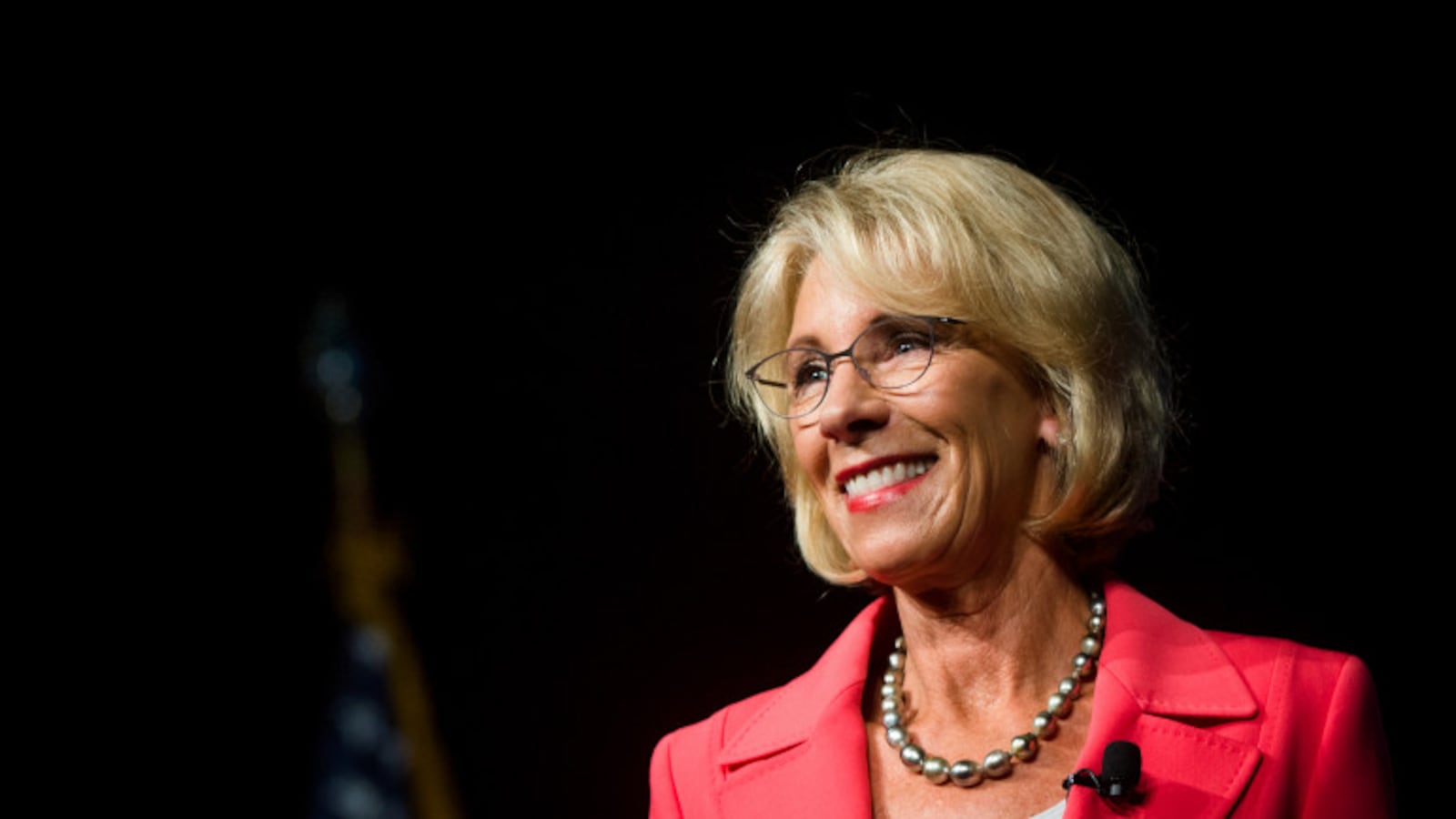The White House is proposing the federal education department merge with the labor department to form the Department of Education and the Workforce, officials announced Thursday.
It’s an eye-catching plan, given how relatively rare changes to the Cabinet are and the current prominence of Betsy DeVos, the current head of the education department who has proven deeply unpopular with educators since her confirmation hearings last year. Education Week first reported the proposed merger on Wednesday.
Here’s what we know so far about what’s going on and why it matters.
The news
The Trump administration announced a big-picture government reorganization Thursday, and the education-labor merger is one part of that.
The new department will have four main sub-agencies: K-12; higher education and workforce development; enforcement; and research, evaluation and administration.
It comes after DeVos proposed acquiring programs from the labor department that have to do with educational programs for unemployed adult workers, reintegrating ex-prisoners, and “out-of-school” youth, according to the New York Times.
The two departments already work together on some adult education and vocational training programs, according to the the Wall Street Journal. In an interview with the Associated Press, director of the Office of Management and Budget Mick Mulvaney said that there are currently 40 different job training programs spread over 16 agencies. This merger would be one attempt to change that.
DeVos said she supports the plan.
“This proposal will make the federal government more responsive to the full range of needs faced by American students, workers, and schools. I urge Congress to work with the Administration to make this proposal a reality,” DeVos said in a statement.
The implications for K-12 education
Today, the department distributes K-12 education money and enforces civil rights laws. It’s small for a federal agency, at 3,900 employees. On a symbolic level, a merged department would be de-emphasizing education.
The existing set of offices overseeing K-12 education would move into the new agency, according to the document, which says those offices will be “improved” but not how.
The education department’s Office of Civil Rights will become a part of the new department’s “enforcement” sub-agency.
The plan doesn’t mention any cuts to the agency or its offices, though Secretary DeVos has proposed cuts in the past.
Why this might not happen
The proposal would require congressional approval, which will likely be a difficult battle. Past attempts to eliminate the Department of Education in the 1980s and 1990s didn’t gain any traction, and both lawmakers and unions have expressed skepticism toward the new plan.
Sen. Patty Murray, the ranking Democrat on the Senate labor and education committee, quickly put out a statement criticizing the plan.
“Democrats and Republicans in Congress have rejected President Trump’s proposals to drastically gut investments in education, health care, and workers — and he should expect the same result for this latest attempt to make government work worse for the people it serves,” she said


